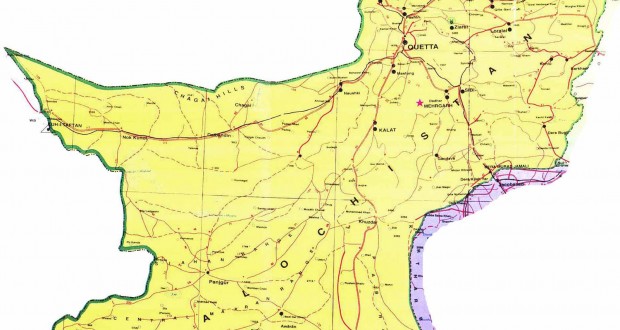Saher Baloch
The area of Baleecha in Tump tehsil is eerily silent. Destroyed mud houses, schools and a virtually vacant bazaar are all that is left in one part of it, which just a week ago housed about 10,000 people. The one or two people on the street scurry away when I approach them.
The first thing on the minds of this area’s residents is how many informants are there in their midst. The people I talk to don’t specify who is being reported back to. The army operation in Tump, Gomazai and Mund — the border areas of insurgency-infested southern Balochistan — has further fuelled such misgivings.
There have been casualties. Twelve dead, including two children, some locals say. But the number varies depending on which organisation or institution you’re asking. People, whether in a mud house or a well-furnished office in Baleecha, refuse to say much; they don’t want their actual views on the situation to become known.
But 12 dead it is. “Militants”, if one speaks to the Frontier Corps (FC), and “freedom fighters”, if one looks at the graffiti on the way to Tump. And in the case of those who are neutral, the deaths are referred to as those of innocent men and women.
It is the ones who choose to remain neutral that are the worst affected by the ongoing insurgency in Kech district. That it is a minority is a sad reminder of the state of affairs in the province. This past one week, Kech district has been in the news as incidents of extremism and operations in insurgency-hit areas have occurred in quick succession.
A few minutes before Fajr prayers, a government officer in Tump was woken up by the sound of helicopters. “Minutes later, there were shouts from the main bazaar that the army is here,” he says. “Then came the sound of heavy shelling and bombardment from Baleecha and Gomazai, which are 20 kilometres apart.” Twenty people were picked up by the FC. Some have returned, the officer adds, but most haven’t.
Locals say a meeting between the Balochistan Liberation Front and the Balochistan Republican Army was under way in Gomazai when the military attacked. “They were settling an internal dispute when helicopters surrounded the area. Men from both groups managed to escape through the watercourses [known as karez]. But it resulted in an all-out operation,” the officer says.
A social worker in the area claims that some people were brutally tortured before being thrown out from a helicopter. Faisal Baloch, son of Salaam, was among the ones tortured in front of his family, locals say.
Most houses in Baleecha, Gomazai and Mund now have more women than men, a tribal elder says. Young boys show a video they made of a house burning down to ashes, which is also available on their social networking page.
Most people prefer to remain anonymous. It is safe, they say, not to have an honest opinion in such times. At the moment, the road leading to Gomazai is open but not many people venture there as they are scared of being “picked up”. By whom, they choose not to disclose.
According to the spokesperson for the chief minister of Balochistan, Jan Mohammad Buledi, “This is not a planned operation. These are continuing skirmishes between the militants and the FC. Their families say that these men [militants] are innocent. But most of them are not.”
He says that in August “a bus carrying FC personnel was attacked by militants in Nasirabad, which set off a wave of search operations and attacks by law enforcement agencies.” However, he adds, that “unfortunately, some innocent people also die in the thick of the fight. We [the government] do not have a writ in these areas. As a result, you see an explosion of various extremist organisations cropping up in Mund, Dasht, Gomazai and Turbat.”
About Baloch militant groups, Mr Buledi said: “We want to hold talks with them but they refuse to budge from their position. Presently, various separatist and extremist groups are fighting each other over resources and power-sharing around the border Balochistan shares with Iran. To some extent, the situation is very confusing.”
The reason the situation in Balochistan’s Kech district seems confusing, according to columnist Manzoor Baloch, “is because of the absence of the media. Local reporters fear for their lives. Those who do venture to such areas, no matter how powerful, are coerced into changing their tone.”
Afghanistan, India and the Jundullah, often named in the same breath, are also cited by locals as reasons for the growing tensions in the district.
The few notable developments in the past 14 years are said to include a rise in Kech’s literacy levels. “It is a fact which can’t be digested by a few people,” one observer says. “Education would mean better and detached understanding of issues. If most people in Kech start thinking in a constructive manner, then who would involve themselves in armed conflict? Balochistan is a mine of resources and everyone wants a piece. The issues are designed to look confusing. They aren’t actually.”
Courtesy: Dawn
Republished in The Balochistan Point on 7th September, 2014.
Disclaimer: Views expressed in this article are those of the author and The Balochistan Point not necessarily agrees with them.
 Balochistan Point Voice of Nation
Balochistan Point Voice of Nation




